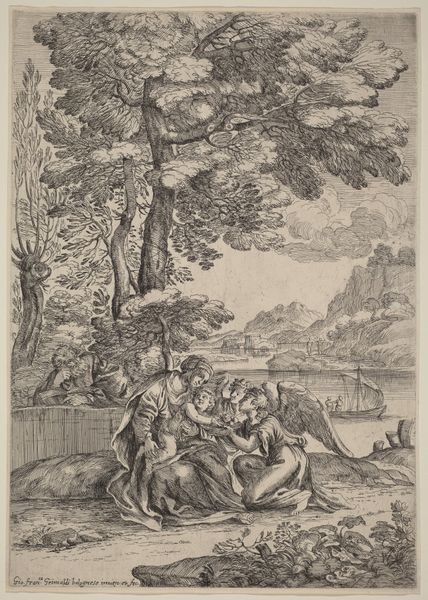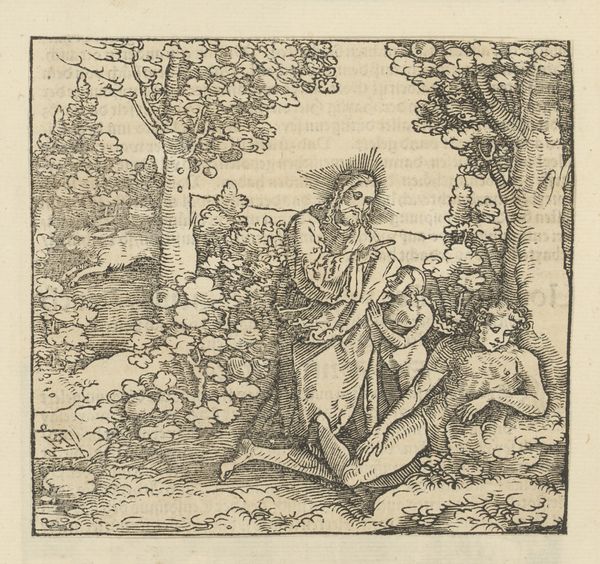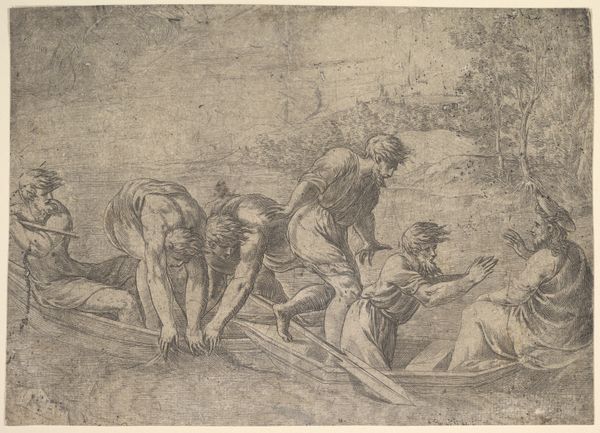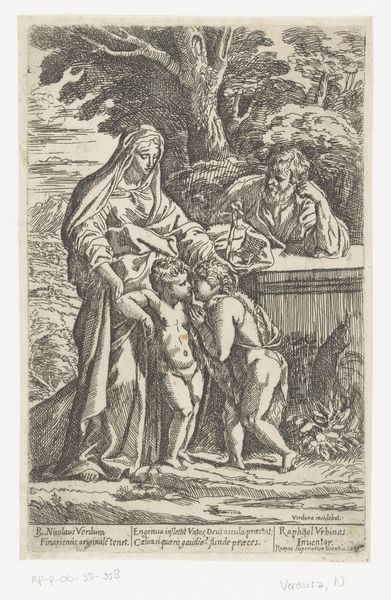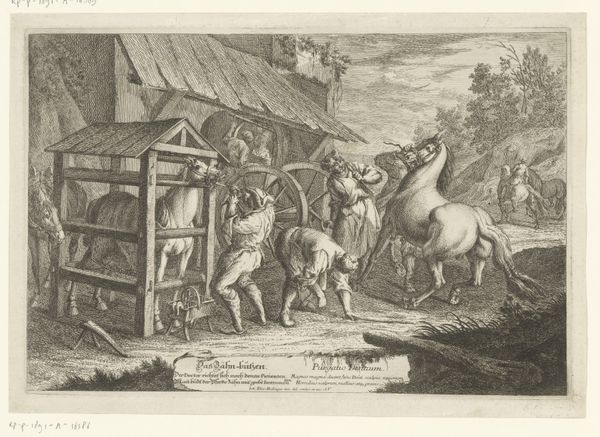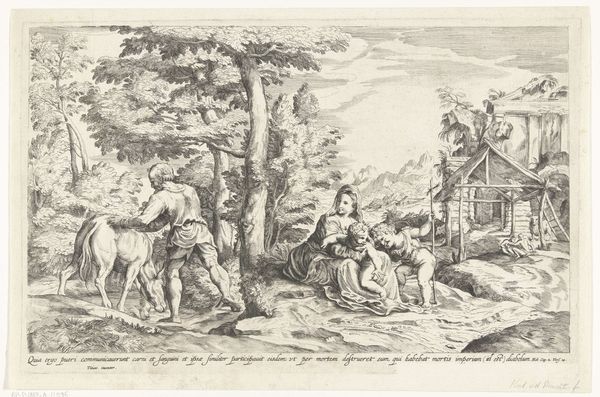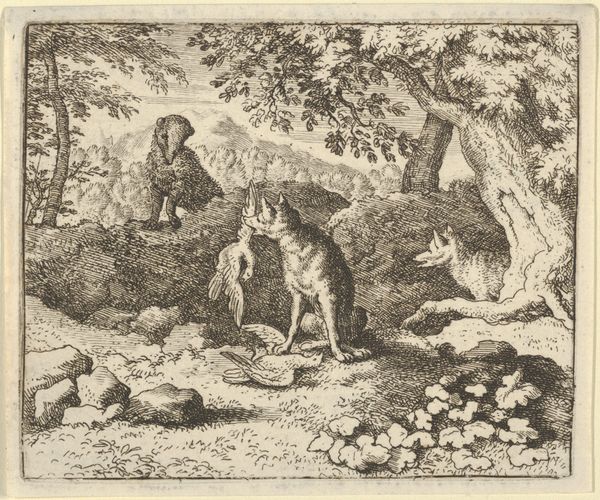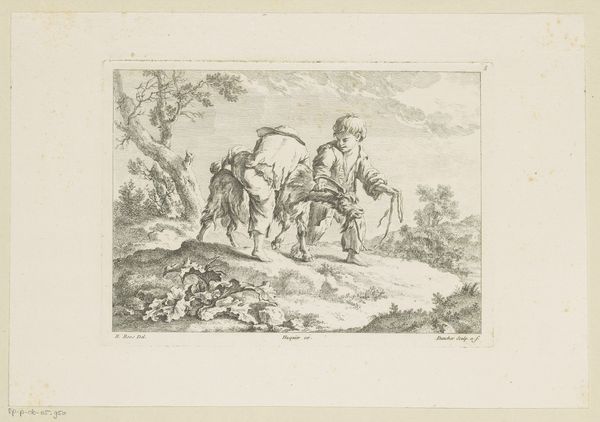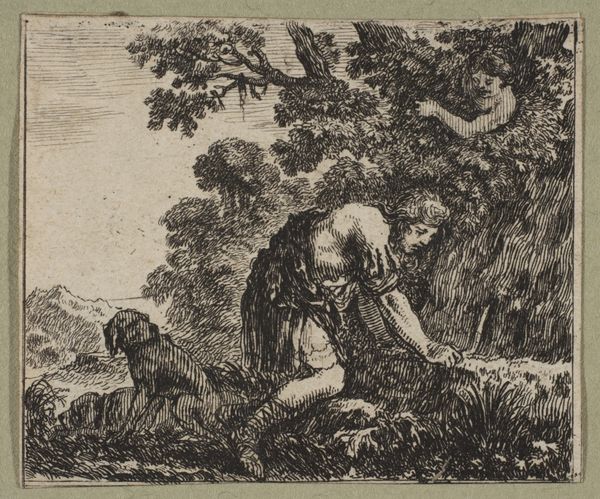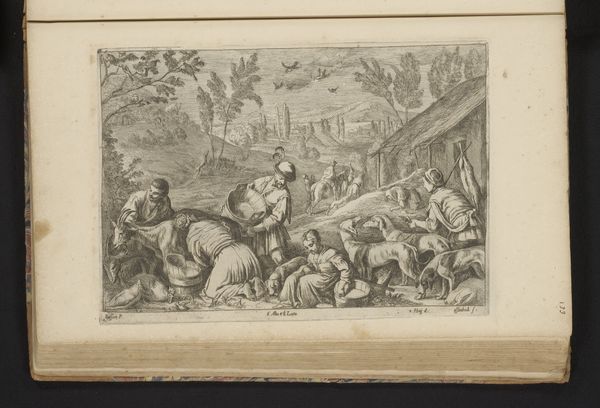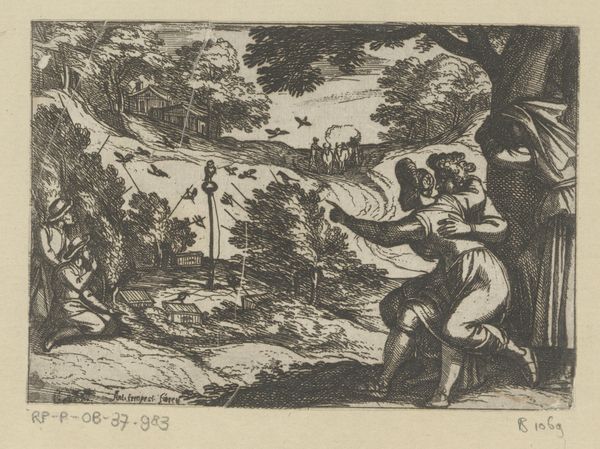
print, intaglio, engraving
#
narrative-art
# print
#
intaglio
#
figuration
#
genre-painting
#
history-painting
#
engraving
Dimensions: height 87 mm, width 94 mm
Copyright: Rijks Museum: Open Domain
Curator: This print is entitled "The Drunkenness of Noah," created in 1596 by an anonymous artist. It’s an intaglio engraving and resides here at the Rijksmuseum. My immediate impression is the shame depicted here, a familial burden played out across a small stage. What strikes you? Editor: Well, immediately, it feels deeply judgmental. The lone figure pointing seems to embody a condemning gaze, a violation of privacy even in its historical context. The composition is cleverly arranged to put him as a focal point. Curator: Indeed, it stages the drama quite clearly. We see Noah, utterly incapacitated after drinking wine he produced himself, lying exposed. His two sons, Shem and Japheth, piously avert their eyes as they cover him with a blanket, while Ham openly mocks his father's state. It speaks volumes about hierarchies of respect and familial duty within a patriarchal framework. Editor: I’m interested in how the image normalizes, or perhaps, attempts to resolve anxieties about power and morality. The pious sons literally cover up transgression, maintaining a particular narrative of proper behavior. What is the artist trying to communicate about inherited trauma or societal expectations through this depiction of biblical events? Curator: Considering it was created during a time of intense religious scrutiny and social hierarchies, this image offers insight into acceptable public behavior, while perhaps critiquing the consequences of unchecked authority or indulgence. The artist uses Noah's vulnerability to explore themes of judgment, piety, and the potential for the disruption of social order. It almost anticipates Freud, doesn’t it? Unconscious desires spilling messily into public view. Editor: Exactly! There's an incredible tension there between the intended moral lesson and the rather uncomfortable exposure of vulnerability. One has to consider how the viewers receive the image and its implication for shifting gender and power roles as people are negotiating these new familial values. Curator: That said, let’s also acknowledge that reading the artist’s mind centuries later is tricky. The social implications were numerous during the reformation but our reading will invariably carry the context and anxieties we project today. Editor: Agreed, but grappling with those potential layers of interpretation—the artist's intentions versus our contemporary analysis— is what makes this, ultimately, such a thought-provoking print. Curator: Precisely. A powerful reminder that art continues to generate different layers of narratives through various cultural eras.
Comments
No comments
Be the first to comment and join the conversation on the ultimate creative platform.
